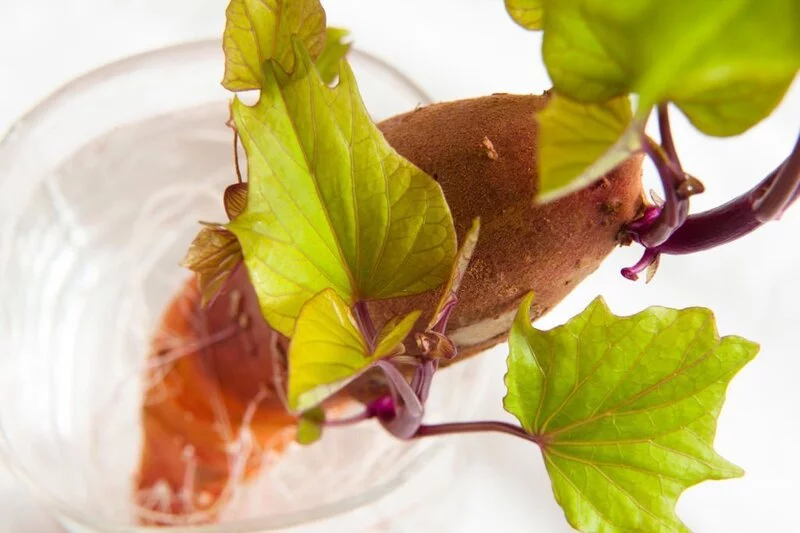Ever dreamt of harvesting potatoes from thin air? No, this isn’t some science fiction fantasy but a reality thanks to the magic of aeroponics. This innovative gardening method takes the dirt out of the equation, letting plants grow in air or mist environments packed with nutrients. If you’re curious to know how you can grow potatoes without a mound of soil, stay tuned. We’ve got the answers right here!
Aeroponics
Before we dive into the potato-growing part, let’s first understand what aeroponics is all about. In aeroponics, plants are grown in an environment where their roots are exposed to air and receive nourishment from nutrient-laden mist. You’re probably wondering, “Why would plants prefer to grow in thin air rather than cozy soil?”
Well, here’s the fun part. In aeroponic systems, plants don’t have to waste energy growing extensive root systems to search for nutrients. Instead, they get a direct supply of water and nutrients in the mist, which allows them to focus more energy on growing up top.
For potatoes, this method has added benefits. With aeroponics, there’s no need to hill up soil or dig deep to harvest your spuds. Plus, it virtually eliminates the risk of soil-borne diseases that can plague potatoes. Sounds intriguing, right? Let’s find out what we need to start our aeroponic potato journey!
Materials Needed for Aeroponic Potato Growing
Ready to start your aeroponic potato adventure? Let’s gather everything we need:
- Aeroponic system: You can buy a ready-made system or DIY one with a bit of online guidance. The system should include a reservoir for the nutrient solution, a pump to mist the solution, and net pots to hold the potato cuttings.
- Potato cuttings: Choose disease-free seed potatoes and cut them into chunks, making sure each chunk has at least one ‘eye’ (the little dimples on the potato skin).
- Nutrient solution: This will feed your potatoes. You can find it at gardening stores or online.
- Light source: If you’re not growing your potatoes outdoors in sunny conditions, you’ll need a grow light to provide the necessary light for your plants.
Setting Up Your Aeroponic System
With all your materials at hand, let’s get to the exciting part: setting up your aeroponic system! Here’s a simple step-by-step guide:
- Prepare the System: First, clean your system thoroughly to prevent any unwanted microorganisms from hitching a ride.
- Fill the Reservoir: Add water to the reservoir, followed by the nutrient solution. Follow the instructions on the nutrient package for the right ratio.
- Place the Potato Cuttings: Put each potato cutting in a net pot, ensuring the eye points upwards. Now, place these pots in the aeroponic system.
- Turn on the System: Start your pump and ensure the misters are providing a good coverage to the potato cuttings. If you’re using a light source, adjust it to the correct height and duration.
Setting up an aeroponic system might seem like rocket science, but with a bit of patience, you’ll have it up and running in no time. Now, let’s move on to how to care for our sky-high spuds!
- GROW INDOORS ALL YEAR: Grow a variety of leafy greens, herbs, vegetables, fruiting plants, and flowers. Low-pressure aeroponics allows for faster plant growth and better nutrient absorption for healthier plants. High quality plastics made from PC-ABS and HDPE, food safe and won’t break or break down over time, preventing microplastics from contaminating your food. Assisted automation allows you to learn how to maintain and manage the system. Germination should be done outside of the system.
- DESIGNED FOR HIGH-YIELD: The system is designed to deliver maximum yield, allowing your plants to fully express themselves. The plant spacing has been engineered to allow for large plants to grow. The side-mounted lights ensure the plants receive light from top to bottom. Light exposure from the six light bars gives the plants 360 degree light exposure. The root zone is contained in the modular vertical pole, and allows the plant’s roots to grow to their greatest potential.
- DESIGNED BY GARDENERS, FOR GARDENERS: We designed the Aerospring to be the most usable hydroponic system. Easy access to the water reservoir for water management. The 20 gallon reservoir, the largest in its class, requires less frequent refilling. Easily detachable internal hose for draining/changing water. The vertical pole is easy to disassemble for cleaning and reassembly, and dishwasher safe. Plastics are opaque, preventing algae from growing inside. The wheelbase allows for easy movement.
- QUALITY COMPONENTS: Full-spectrum, professional grow lights, highly efficient at 2.05 (umol/J), light intensity at 367 PPFD (μmol/m2/s) at 8in, CRI >90, CCT = 4000k, estimated lifespan 50,000 hrs, for all stages of plant growth. Sicce Syncra Silent 1.5 pump, with a 3+2 year manufacturer’s warranty. Oxford D600 tent material, with highly reflective interior panels, prevents light seepage, keeping your living space dark. Aerospring systems are manufactured in Singapore to strict quality assurance.
- SUPPORT & COMMUNITY: We pride ourselves on supporting growers. Our mission as a small, hands-on company is to empower people to take back control over their food – to reconnect with it and truly experience the joy of growing their own food, right at home. We are ourselves growers and urban farmers, and we want to pass on our positive experiences and knowledge to you. Aerospring owners get exclusive access to our online community, for growing tips, grow guides, troubleshooting and guidance.
Planting and Caring for Your Potatoes
Now that our aeroponic system is set up, it’s time to give our potatoes the TLC they need. Here’s what you need to do:
- Monitor the System: Keep an eye on your system to ensure the pump and misters are working properly. The roots should be constantly misted but not drenched.
- Check the Nutrient Solution: Regularly check the nutrient solution’s level. Refill as needed and replace entirely every 2-3 weeks to ensure your potatoes are getting fresh nutrients.
- Provide Adequate Light: If using a grow light, make sure your potatoes get around 12 hours of light per day.
- Watch for Pests and Disease: Even though aeroponics reduces the risk of disease, it’s important to regularly check your plants for any signs of pests or disease.
Harvesting Your Aeroponic Potatoes
After 70-90 days, your potatoes should be ready to harvest. You’ll know it’s time when the plants start to yellow and die back. The beauty of aeroponics is that harvesting is a breeze. You can simply remove the plant from the system and pluck the potatoes off the roots. No digging or dirt involved!
Conclusion
Growing potatoes in thin air using aeroponics is an exciting venture, a perfect blend of science and nature. It might take a little getting used to, but the benefits are immense: healthier plants, easier care, and effortless harvesting. So why not give it a shot? Embrace the future of gardening and enjoy a bountiful potato harvest that’s truly out of this world!






